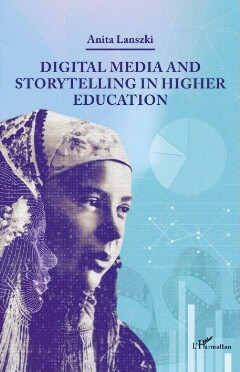Page 109 [109]
108 | Digital Media and Storytelling in Higher Education
At the same time, narrative construction cannot be separated from the
phenomenon of identity construction. As Murai and Toth (2011) explain,
memory is
[...] a construction of meaning that (1) is a common product of the participants’
communication; (2) always takes a particular form under the influence of the
given situation and circumstances; (3) is made from the horizon of the present,
which determines selection and interpretation (Murai & Toth, 2011).
The project entitled The Sod Family Narratives/Vitrin project approached the
Holocaust through family memories and DST. The project was carried out
in 2013-2014 in a number of Hungarian secondary schools under the Active
European Remembrance program, and was organized by the Anthropolis
Association. The aim of the project was to create intergenerational
communication and remembrance. A project with the same aim called We Tell
In Pictures was organized in 2015 by the Yad Vashem Institute, the Holocaust
Memorial Centre in Budapest. In the first prize-winning digital story,
Zimmermanns’ Maid, the student told the story of her great-grandmother,
who had to witness the persecution of her beloved employer and her family.”
The difference between digital stories and oral history narratives is that
in DST projects the story is not in the form of a self-narrated testimony
but is included in the narrative of another person. Furthermore, while oral
history takes the form of a monologue, DST involves an interview process.
In DST projects the memory construction initially unfolds in a dialogue.
The individual memory story contributes to the cultural identity of a small
community.
Ando (2011) also views history as a construct with a specific identity¬
forming function and emphasizes that storytelling is a social, communicative
act. In her view, the spoken narrative is a discursive genre and a cognitive
schema that plays a fundamental role in memory and the formation of
individuality. Andó stresses that collective memory can be derived from
individual memories, with the collective reconstruction of memories creating
an emotional intimacy within a community that binds the members of the
group together.
László (2003) and Andó (2011) also refer to Assmann’s theory of
communicative and cultural memory. The fundamental difference between
the two types of memory is that communicative memory is based on direct
interpersonal oral narratives. It problematizes the relationship between the
individual and history while also generating intergenerational dialogue.
However, the elements of cultural memory are schematized narratives that
help to establish contact with memories that are temporally out of reach
and can only be authenticated by special persons (e.g., shamans, scholars, or
* https://www.youtube.com/watch?v=N WIBNot-uY

